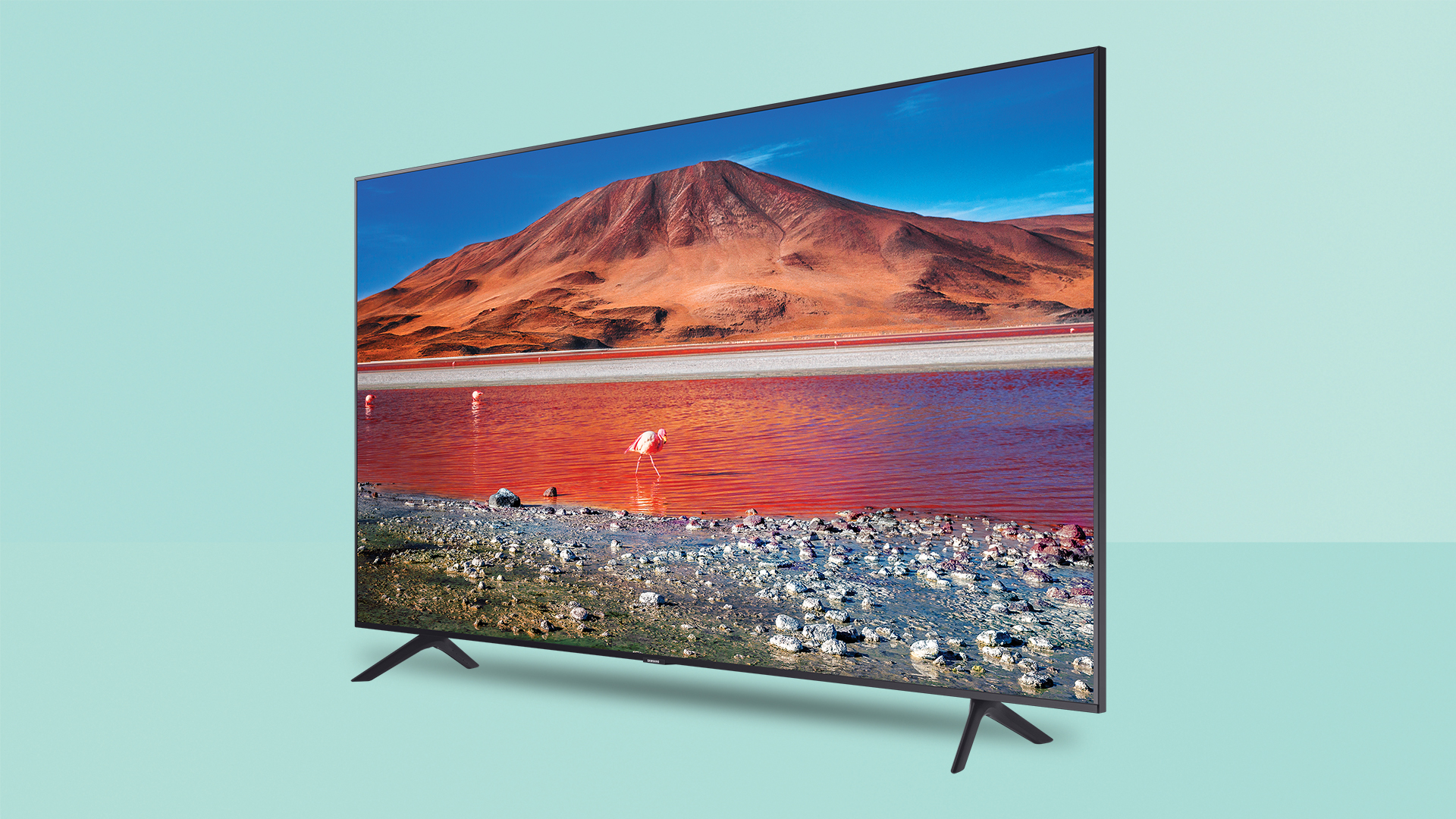Samsung TU7100 vs Hisense A7500: Which cheap TV is best for you?
In the battle of Samsung TU7100 and Hisense A7500 price is not a factor – so which TV wins and why?


Here's the Samsung TU7100 vs Hisense A7500 debate – a head to head of two very similarly priced budget TVs that have at one time been contenders for T3's best TVs for under £500 guide. When there’s so little to separate them on cost, what separates these two sets and which is best?
Hisense might be the brand you’re less familiar with here, but they’ve got a great track record of making budget TVs – you’ll actually find two of their models on the budget list we just mentioned. Samsung’s track record here is obviously well known, and positive; you’ll also find more budget Samsung TVs on our best TVs under £1000 guide.
If you want an even more comprehensive look at these two, you can check out our Samsung TU7000/TU7100 review and Hisense A7500 review.
Samsung TU7100 vs Hisense A7500: Price

It’s worth saying upfront on the Samsung TU7100 vs Hisense A7500 price comparison that there are regional differences for these TVs: the Samsung TU7100 is available in the UK but not the US, but the Samsung TU7000 is an almost identical equivalent; on the Hisense A7500, there isn’t really a direct equivalent for the US market in the same way.
Let’s get down to those prices then. The TU7000/7100 starts at $329/£379 for a 43-inch model, rising through to $849/£799 for the 75-inch model. The 50-inch TU700/7100 is available for $399/£429 – which is worth mentioning because it’s as big as the Hisense goes in the UK.
The Hisense A7500 can be picked up for £379 at 43-inches and £429 at 50-inches. Which you’ll notice is exactly the same as the Samsung's pricing, assuming no current price discounts (you can see the current lowest prices for both just below).
Samsung TU7100 vs Hisense A7500: Design & Connectivity

Neither of these TVs is extravagantly designed, when you’re talking about big panels at this price range then the design is more about functionality, what is the best it can look and work, without costing too much?
In this regard though, both do quite well. Neither television has an edge-to-edge display but they have small bezels that don’t distract. The Hisense A7500 has a small triangular lip that runs along the bottom, and perhaps the TU7100 looks a bit more refined from the front, but not especially. There’s nothing here to prefer one of the other than mild taste-differences.
Get all the latest news, reviews, deals and buying guides on gorgeous tech, home and active products from the T3 experts
The stands are worth mentioning, if only for practicality. The Hisense has a central curved bar that runs long the bottom, and it’s up to 250mm deep. This means if you’re placing it on furniture rather than wall-mounting, you’ll want to measure that space so that it’s deep enough.
The TU7100 comes with a two-pronged approach, literally. On either side of the TV, there is a stand with two feet. Depth is 192/250mm depending on whether you’re going 43-inches or 50-inches, but the main thing to think about here is that with two separate feet, you want to make sure that your intended surface is wide enough.
For connectivity, the Hisense A7500 has 4x HDMI 2.0, 2x USB, 1x Composite, 2x RF input, TOSLINK and LAN Ethernet ports as well as being able to link up to your Wi-Fi and is Bluetooth compatible. The TU7100 has 2x HDMI 2.0, 1x USB, 1x composite, an RF Input and a TOSLINK. It’s also Wi-Fi and Bluetooth enabled.
So, the A7500 sets itself apart here in regards to the pure number of ports, so if there’s a lot you need to plug into your TV it might be a good choice for you. Both support HDMI eARC, which will work great with one of the best soundbars – the advantage of the Hisense is that it gives you more spare ports to do that with!
Samsung TU7100 vs Hisense A7500: Picture quality

On the face of it, these two are very close. Both the Samsung TU7100 and the Hisense A7500 have 4K panels with a resolution of 3840x2160 and both offer HDR10+ support. However, the Hisense also includes Dolby Vision HDR support, which really helps to make the most of HDR on these more limited-brightness screens. Dolby Vision is much more widely used than HDR10+ (it's used by Netflix, Disney+ and Apple TV+), too.
Comparing the two, it might be fair to say that the Hisense delivers on bright colours better than the TU7100. That Samsung TV, however, does have the edge on whites, deep blacks and skin tones.
Both of these TVs aren't as strong with contrast and black levels across the board, due to having more basic backlights than more expensive sets. At this price level, there isn’t much you can do about that, although for a little more you might want to check out the Samsung TU8500 which uses a dual-LED backlight for strong black tones.
There are other subtleties to consider. The Hisense's rich colours and Dolby Vision support make it a really strong choice when viewed head-on, but the Samsung offers better viewing angles, so in a family room it may be the better option. The Samsung also offers really impressive upscaling of HD video to 4K, so if you watch lots of TV or streaming that isn't Ultra HD, it really makes the most of it.
As you’d expect, they can be flipped between multiple picture modes, though Samsung’s automated mode seems to be a bit smarter than the Hisense’s. They both have gaming modes, and when switched on, both TVs perform well with an input lag of 10.2s for the TU7100 and 10.8s for the A7500. That compares will with the best gaming TVs, though your don't get any HDMI 2.1 features here.
Samsung TU7100 vs Hisense A7500: Verdict

Honestly, when we put these two side-by-side there’s very little to split them. Given that they’re priced identically, that’s probably not a surprise. Do check our widgets for the latest prices, if you’re torn between these two, our actual recommendation for many people would be to go for whichever there’s a good deal available on.
The Samsung TU7100 just about wins out on pictures and the Tizen-based smart TV software is excellent, but they only give it a small edge. The Hisense A7500 is jam-packed full of ports which might just suit you on a convenience level, and Dolby Vision support really makes the most of HDR content. We’d say at this price there’s not enough between the displays to make that a bad choice.
